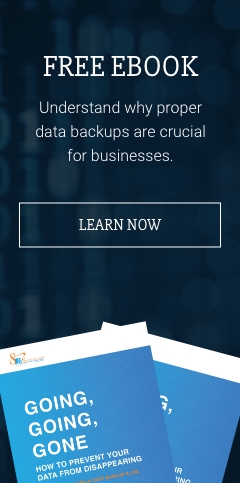Budgeting is important to any company’s success, as it helps ensure that an organization's finances are allocated appropriately. Without proper budgeting, planning is futile and business objectives can become more difficult to achieve.
There are many business aspects that you should budget for, but one of the most important ones to consider is your IT.
What is IT budgeting?
IT budgeting is the process of allocating monetary resources to a business’s various IT projects and technologies. When done correctly, an IT budget can improve planning and communication. The budget not only provides the necessary resources to keep a company running efficiently, but it also ensures better decision making.
What should an IT budget include?
There are various aspects that you need to factor in for your IT budget, including:
1. Hardware costs
Hardware costs include current equipment expenses, any planned hardware purchases, and the costs of any routine hardware implementations. Your hardware list should include desktops and laptops, servers, switches, routers, storage devices, video cards, and telephony systems
Conduct a hardware assessment annually to identify the devices that are running well and those that must be upgraded. Desktops and laptops should be replaced every three to five years, while servers should be replaced approximately every five years. Ensure that your new hardware is compatible with your current infrastructure to avoid any issues.
2. Software costs
Software costs include the total value of all your software, any anticipated software purchases, and the costs of any routine software implementation.
Consider upgrading some aspects of your IT to enhance your business processes. For instance, automation software can help you streamline processes by simplifying routine tasks such as mailroom management, inventory tracking, and work order management. This allows you to save time so that you and your employees can focus on tasks that require critical thinking and advanced logic.
3. Cost of consumables
Aside from hardware and software costs, consider expenses related to your consumables as well. The prices of supplies such as batteries, ink cartridges, cables, and paper may seem insignificant at first, but they can easily add up into the thousands when you look at your year-end totals.
4. Security-related expenses
Because cyberthreats are becoming more sophisticated, businesses need to invest in robust cybersecurity solutions. In fact, the cybersecurity software market is expected to grow from $183.2 billion in 2019 to $230 billion in 2021 as more businesses position cybersecurity as a key business imperative.
This means that your business must factor in network and data security costs in your IT budget.These include antivirus and anti-malware software, firewalls, and intrusion detection systems. Budget for physical security systems as well, like on-site security cameras and alarms, as these technologies can significantly reduce the risk of attacks, be it from a third-party or an insider.
5. Training costs
Because your employees are the ones who'll use your technology, you also need to consider the cost of properly training your staff to use your IT infrastructure to maximize your return on investment. Training also reduces the risk of human error, which is the root of many security breaches.
6. Support and maintenance costs
Your systems will experience issues from time to time, so it’s important to include support costs in your IT budget. IT support can come from a managed IT services provider (MSP) like Safebit, a virtual chief information officer, or supplementary software or hardware services.
One of the best ways to save money on IT is by partnering with a reliable MSP like Safebit. We will help you develop an IT plan depending on your needs and budget, so you can grow your business. The best part? We only charge a fixed monthly fee. To know if your business is ready for an MSP, download our FREE eBook today.


